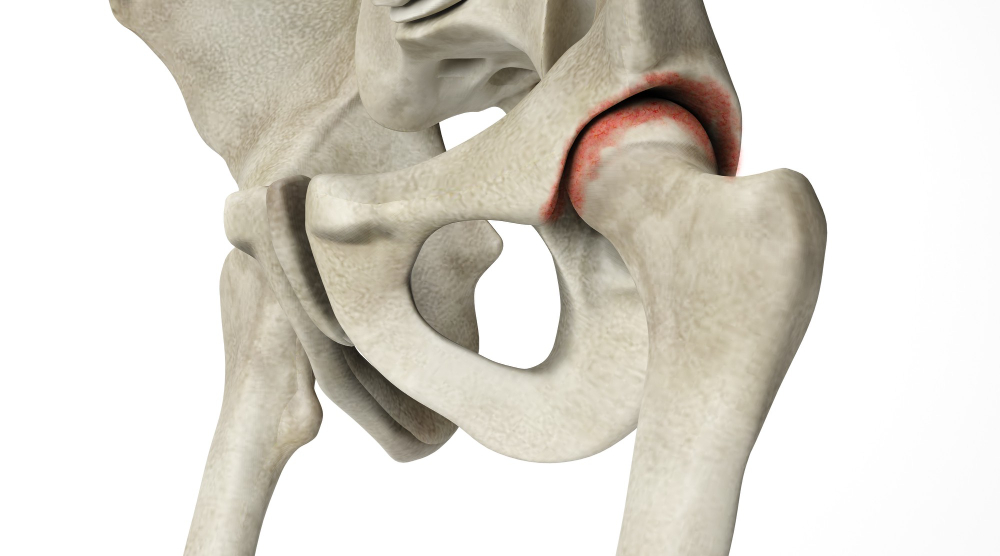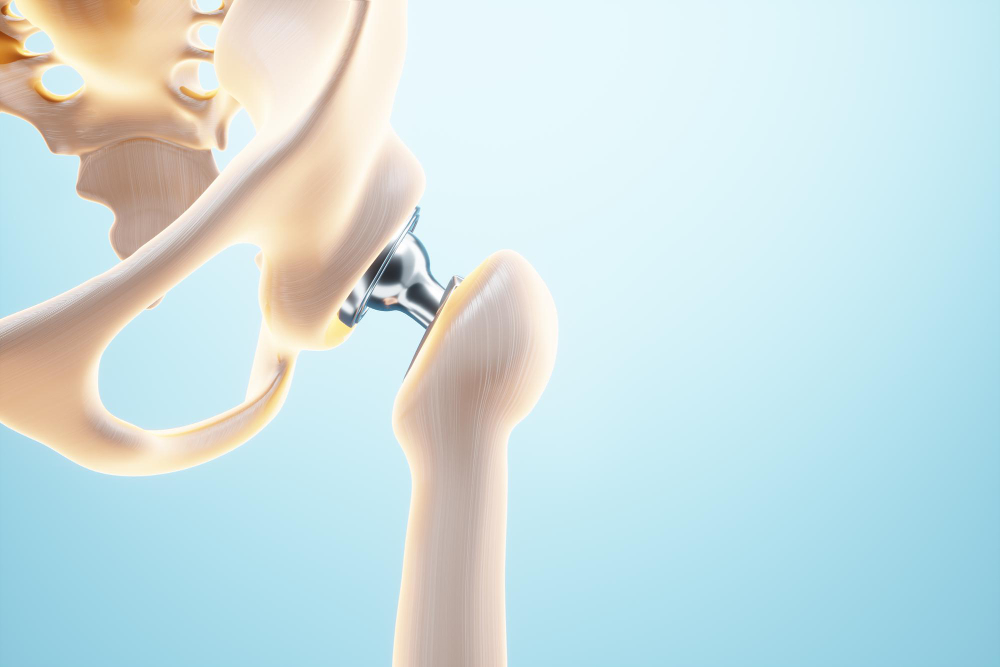When a hip replacement is needed?
If the hip joint becomes damaged or worn out, hip replacement surgery may be necessary in order to increase mobility and relieve pain, which may persist even when the patient is resting.

Osteoarthritis is the most frequent cause of hip replacement surgery. There are also other ailments that can lead to damage in the hip joint.
- rheumatoid arthritis
- hip fracture
- septic arthritis
- Diseases that result in abnormal development of bones (known as bone dysplasias)
What is the hip?
The hip joint links your thigh bone (femur) to your pelvis and is a ball-and-socket joint. The femur’s top has a ball-shaped structure called the “head” that fits into the acetabulum or socket. Ligaments, tendons and muscles around the joint keep it in position. The hip joint is known to be the most flexible and unrestricted joint in the body, allowing it to move in different directions such as frontwards, backwards, sideways and even rotating.
What is hip replacement surgery?
Hip replacement surgery involves the replacement of select sections of the pelvis and femur, which constitute the hip joint, in order to alleviate discomfort and rigidity connected to hip arthritis.
This process is occasionally utilized for addressing issues like a fractured or incorrectly developing hip, as well as various other ailments.
Who can benefit from a hip replacement?
If you experience considerable discomfort, swelling, and injury of your hip joint caused by ailments like: your medical practitioner may suggest hip replacement.
- Osteoarthritis (most common)
- Rheumatoid arthritis
- Osteonecrosis (avascular necrosis)
- Injury such as hip fracture
- Tumor in the hip joint

What are the types of hip replacements?
There are two primary categories of hip replacements:
- The most prevalent type of hip replacement is known as a total hip replacement. This surgical procedure involves replacing both the femoral head and the acetabulum with an artificial implant.
- Partial hip replacement involves replacing only the femoral head, mainly performed for patients who have specific hip fractures.
What symptoms may indicate that I need a hip replacement?
Certain symptoms may be linked to health issues that are treated by hip replacements. These symptoms consist of:
- Pain in the anterior hip or groin.
- Discomfort experienced in the area of the buttocks and the trochanteric region.
- Pain with activity and at rest.
- When you apply pressure on the leg, the pain intensifies.
- Stiffness/tightness of the hip.
- Loss of motion.
- Difficulty sleeping.
- Difficulty walking.
- Difficulty putting on shoes and socks.
Minimally Invasive Hip Replacement
The goal of minimally invasive hip replacement surgery is to reduce the damage done to healthy tissues like muscles and blood vessels. Although anterior hip replacement was originally promoted as a minimally invasive option, today orthopaedic surgeons employ these techniques with all surgical approaches to the hip joint. Your surgeon will help you determine which approach is most likely to yield optimal results.
When the surgery is done in a way that is not very invasive, the surgeon will get to the hip joint by creating one or two small openings and repositioning the muscles. There are various benefits to this way of doing the surgery, for example:
- Lower risk of muscle damage
- Less pain
- Quicker and easier recovery
- Less limping
- Shorter hospital stay
- Lower chance of hip dislocation
Not every patient is a suitable candidate for minimally invasive hip replacement. The surgeon will take into consideration factors such as age, weight, fitness level, and other aspects to determine if you are the right fit.

Traditional Hip Replacement
In standard hip replacement surgery, the surgeon makes a large cut in the patient’s body to reach their hip joint, generally either from the side (lateral approach) or from the back (posterior approach).
It can take a while to fully recover from a typical hip replacement surgery, as the surgeon has to partially cut or separate certain muscles and tendons to access the joint. After the hip implants are inserted, these muscles and tendons are repaired. Until all the supporting structures of the newly replaced hip are completely healed, there is a risk of dislocation.
Communicate with your hip surgeon that specializes in orthopaedics to evaluate the surgical options that will suit you the most.
Recovering from hip replacement surgery
Typically, the duration of your hospital stay will range from 3 to 5 days, however, the amount of time needed for recuperation may differ.
After you’ve been cleared to leave the hospital, the medical staff will provide you with instructions on how to care for your hip at home. In the beginning, you’ll have to rely on a crutch or frame, but a physiotherapist will guide you through a series of exercises designed to strengthen your hip muscles.
An expert in occupational therapy will assess if you require any tools or devices to assist you with your daily activities in your own living space.
It is possible that you have signed up for a workout plan intended to aid you in recovering and enhancing the function of your hip joint.
Typically, individuals can resume light activities or work that is done in an office setting approximately six weeks after surgery. However, healing varies from person to person and it is advisable to consult with a doctor or physiotherapist regarding the appropriate time frame for returning to typical activities.
Treatment in Türkiye:
The medical staff of surgical teams, doctors and consultants in Rehab Türk can provide the best treatment options and free consultations – by striving to keep abreast of the latest medical technologies and methods.

